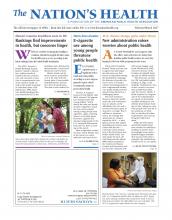Getting active and being healthy in winter isn’t always a walk in the park — especially if the park is covered in snow and ice. Soft hills of freshly fallen snow may look like an inviting winter wonderland from the comfort of our homes, but the cold reality can having a chilling effect on our physical and mental well-being. Luckily, with some planning and preparation, you can weather the winter in good health.
Keeping active in colder weather
On the surface, colder conditions don’t seem conducive to outdoor physical activity, but there are some potential pluses to keeping up an exercise regimen during winter. For instance, less heat and humidity may mean you can take a longer walk or run than usual, which can mean burning more calories. Also, exercise provides a nice boost to the immune system, helping you stave off illness during flu and cold season. Plus, winter conditions can provide a nice break from a usual exercise routine. Instead of walking or running, you can try ice skating, skiing or snowshoeing.
But cold weather does have its risks, such as frostbite and hypothermia, which is a dangerous drop in body temperature. A good first step for exercising in the cold outdoors is layering your clothes. Putting on multiple layers can help trap in body heat and protect you from the moisture of rain or snow, which amplifies the effects of cold temperatures. Avoid cotton as a first layer and choose an athletic fabric that draws moisture away from the skin.

Photo by Julief514, courtesy iStockphoto
When exercising in very cold and freezing temperatures, be aware of the signs of hypothermia, such as mental confusion, poor coordination, slurred speech, drowsiness and cold feet and hands. According to the Centers for Disease Control and Prevention, hypothermia is most likely to happen at very cold temperatures, but it can happen at temperatures well above freezing if you get too chilled through rain or sweat.
If you see signs of hypothermia in someone, take their temperature. If it’s below 95 degrees, the situation is considered a medical emergency. Call 911 and get them to a warm shelter, remove wet clothing and warm up the center of their body first with a blanket or towel.
Of course, if cold weather exercise isn’t for you, you can look into a gym membership or try an indoor weight-resistance routine at home.
Taking care of your winter skin
Cold, dry weather can also come with itchy, cracked skin. However, a few adjustments to your daily shower routine and a humidifier can keep moisture where it belongs.
When it gets cold outside, you may turn up the heat inside, which evaporates water in the air and sucks the moisture out of your skin. To offset the effect of indoor heat, Carolyn Jacob, MD, a board-certified dermatologist and director of Chicago Cosmetic Surgery and Dermatology, suggests using a humidifier to put some moisture back into the air. Consider placing it in the bedroom where you sleep and spend most of your time.
Jacob also recommends taking warm showers, not super-hot ones, even if it’s cold outside. She explained that the hotter the water, the more blood vessels dilate and release fluid into the top layers of our skin, where the moisture can evaporate after showering. Instead, she advises taking a not-too-long warm shower, which will release less moisture into the top layer of skin, and using a moisturizer on your skin immediately after patting it dry to trap the water inside.
She also noted that it’s still important to protect your skin from the sun during the winter months, when getting a sunburn is still a risk. In particular, she says beware of UVA rays, which can penetrate deeper into the skin than UVB rays. They can come through clouds and windows, so don’t forget the sunscreen.
Weathering months of wintertime blues
For some people, the winter months can also come with a swing in mental well-being known as seasonal affective disorder.
According to the National Institute of Mental Health, seasonal affective disorder is a type of depression that comes and goes with the seasons, usually beginning in late fall and early winter and ending in spring and summer. Symptoms of seasonal affective disorder often include low energy, excessive sleepiness, overeating, weight gain and social withdrawal.
People at higher risk include women, who are diagnosed with the disorder four times more often than men, as well as people who already experience depression or bipolar disorder.
If symptoms of seasonal affective disorder persist over a long period, consider seeking professional help. Remedies for the disorder can include medication, psychotherapy and light therapy, which provides daily exposure to artificial light.
- Copyright The Nation’s Health, American Public Health Association









